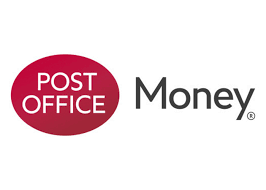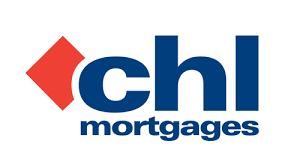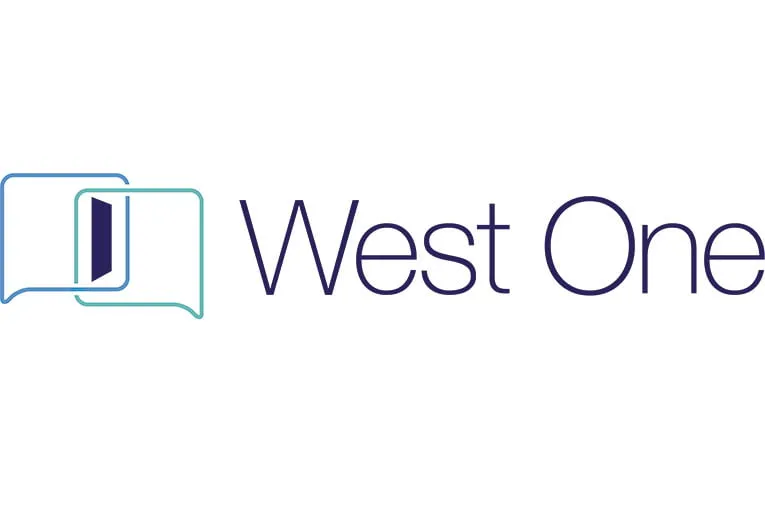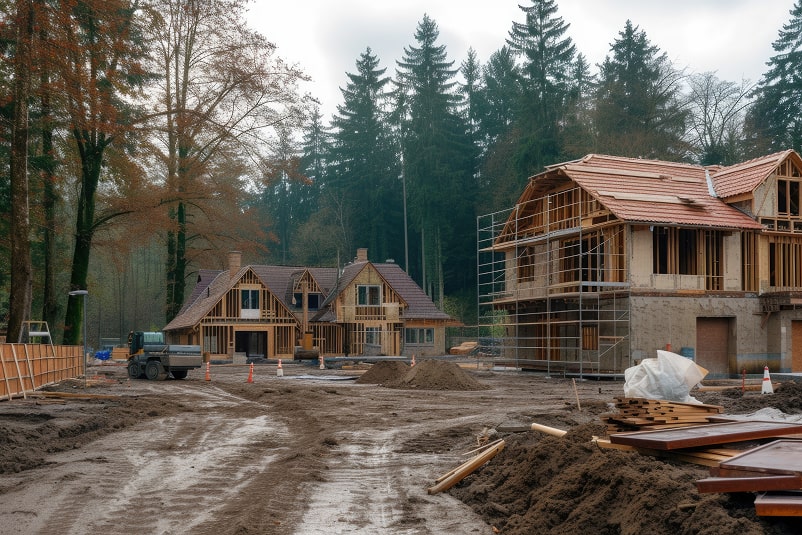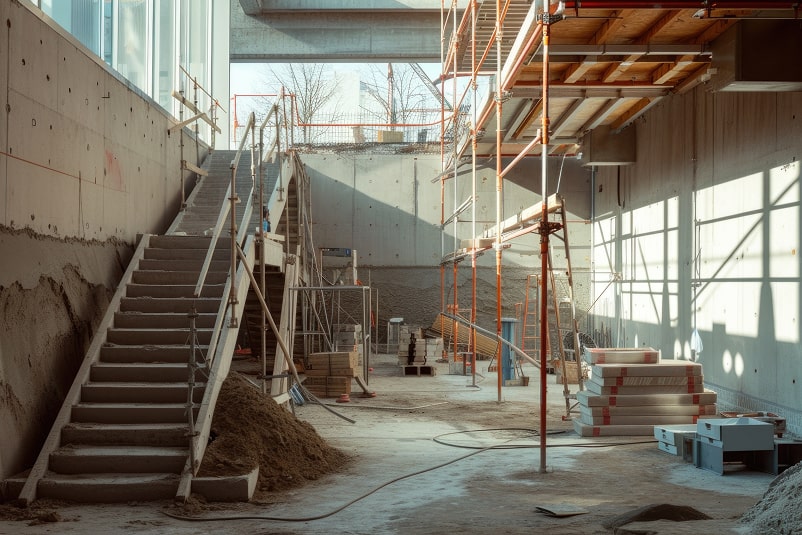Introduction to Refurbishment Mortgages
Refurbishment mortgages play a crucial role in the property market, especially for buyers and investors seeking to purchase and improve properties, particularly those considered a renovation property, that fall short of traditional mortgage criteria. Whether it’s a derelict house bought at auction or a buy-to-let opportunity needing a modern upgrade, refurbishment finance offers tailored solutions where high street mortgages may fall short.
This article explores when refurbishment mortgages are the right product to use, how they compare to similar finance options, who benefits most from them, and what level of experience is typically required. When considering a refurbishment mortgage, both the initial purchase and the purchase price are key factors in budgeting, as they impact deposit requirements, taxes, and the overall cost of acquisition and renovation. You’ll also find updated tables listing both high street and specialist lenders offering refurbishment mortgage products.
What Is a Refurbishment Mortgage?
A refurbishment mortgage is a form of short to medium term finance that allows borrowers to fund the purchase of a property as well as the cost of renovation works. A mortgage loan can be used to cover both the acquisition and the refurbishment, including building work and refurbishment work.
These products are essential for properties that are unmortgageable in their current condition, such as those lacking a functioning kitchen or bathroom, suffering structural damage, or simply being in poor condition. Refurbishment goals often include home improvements, increasing energy efficiency, and improving the EPC rating to make the property more energy efficient, which can help with qualifying for certain mortgage products and incentives.
There are generally two types of refurbishment finance:
Light refurbishment: Also known as light renovation, this covers cosmetic improvements like new kitchens, bathrooms, flooring, decoration, and minor upgrades. Structural integrity remains intact, and work does not usually require planning permission.
Heavy refurbishment: Involves structural alterations, extensions, loft conversions, or work that requires building regulations approval or planning consent. Heavy refurbishment loans are a specific product designed for projects involving significant structural work or planning permission, and can be used for both residential and commercial properties.
Bridging refurbishment is another short-term solution for refurb projects, providing quick access to funds for timely completion. Refurbishment loans are also available as an alternative for funding home improvements. When comparing to other products, bridging finance and short term loan options offer fast approval and flexible terms, while traditional mortgage finance typically involves longer processing times.
Many lenders, including building societies, offer specialised mortgage products for refurbishment, with borrowing terms tailored to the needs of each project. Lenders may lend based on the property’s value, and loan to value ratios will determine how much can be borrowed. The primary mortgage serves as the main security, and additional borrowing can be secured against it.
Other costs and additional fees, such as inspections and staged payments, should be considered, as well as interest rates, which affect the overall cost of borrowing. If refinancing, you may use your existing mortgage or approach your current mortgage lender for additional funding, such as a further advance. The benefit of renovation is that increasing the property’s value leads to increased value and better refinancing opportunities.
Types of Refurbishment Mortgages
When planning a refurbishment project, choosing the right type of mortgage is essential to ensure your funding matches your goals and circumstances. There are several main options available, each suited to different types of properties and renovation needs:
Refurbishment Mortgages: These are designed for homeowners looking to upgrade or improve their own home. Refurbishment mortgages allow you to borrow based on the property’s current value and the estimated value after works are complete. They’re ideal for projects ranging from light cosmetic updates to more substantial improvements, provided the property remains habitable.
Bridging Loans: Bridging loans are a popular choice for short-term refurbishment projects, especially when speed is crucial, such as buying at auction or tackling properties that are currently unmortgageable.
Bridging loans offer flexible terms and can be arranged quickly, making them suitable for properties in poor condition or those requiring urgent works before refinancing onto a standard mortgage.
Buy to Let Mortgages: For investors planning to refurbish rental properties, buy to let mortgages with refurbishment options are available. These products allow you to purchase and improve a property, then refinance onto a long-term buy to let mortgage once the renovation is complete and the property value has increased.
When Is a Refurbishment Mortgage the Right Product?
Before applying for a refurbishment mortgage, planning is essential to ensure your project is organised and all requirements are met.
A refurbishment mortgage is often the best fit when:
The property is uninhabitable in its current state and cannot be financed with a standard residential or buy-to-let mortgage.
You need to add value to a property through refurbishing before refinancing or selling.
You’re buying a property at auction, where fast completion is required and the condition is often poor.
You’re undertaking a BRR (Buy, Refurbish, Refinance) strategy as a property investor.
The works are time limited and expected to be completed within 6–12 months, at which point long-term finance (such as a buy-to-let mortgage) can be arranged. For these shorter projects, a short term loan such as a bridging loan or refurbishment loan may also be considered.
In comparison to similar products:
A bridging loan also offers fast finance for uninhabitable properties but is more expensive and usually carries stricter time constraints. Refurbishment mortgages, particularly those from specialist lenders, are often more flexible and structured with the renovation in mind.
Development finance is better suited for ground-up construction or heavy commercial conversions. If your project involves knocking down walls, building out or up, or creating multiple units, development finance might be more appropriate.
Standard mortgages (including residential or BTL) are only viable if the property is already habitable and needs no urgent repairs.
Who Benefits from a Refurbishment Mortgage?
A wide range of borrowers can benefit from refurbishment mortgages:
Property Investors: These buyers often seek below market value properties with strong capital growth potential. Refurbishment finance allows them to acquire, refurbish, and refinance or sell unlocking gains from the uplift in property value.
Buy-to-Let Landlords: Landlords use refurbishment mortgages to improve rental properties, either to meet new EPC requirements, attract better tenants, or increase rental income. Many landlords also seek additional funding for property upgrades, including energy efficiency improvements to meet EPC requirements. The property can be refinanced post-renovation onto a long-term BTL product.
Auction Buyers: Properties bought at auction often require significant refurbishment. A refurbishment mortgage, or a bridging product with refurbishment finance, enables fast completion and a structured release of funds to carry out works.
Homeowners and First-Time Buyers: Buyers looking to refurbish their home or turn a run down property into a dream home can also benefit although lenders may impose tighter criteria on borrowers without experience or a proven track record. Home improvements are a common goal, and some homeowners use a further advance to access more funds for renovations.
What Experience Is Required?
The experience required for a refurbishment mortgage depends on the type of works and the lender’s criteria.
Light refurbishment: Most lenders are open to first-time landlords or buyers, especially if the borrower has a clear plan and strong financials. Experience is preferred but not always essential.
Heavy refurbishment: Lenders typically favour applicants with experience managing similar projects, particularly those involving significant refurbishment work or building work. This could include previous refurbishments, property development, experience overseeing building work with contractors, or a professional background in construction or project management.
Refurbishment Costs and Budgeting
Careful budgeting is the foundation of any successful refurbishment project. Costs can escalate quickly, so it’s vital to plan for every expense and ensure you have sufficient funds in place. When applying for a refurbishment mortgage, mortgage lenders will expect a detailed breakdown of all costs, including:
Labour and contractor fees
Materials and fittings
Planning permission and building regulations fees
Inspection and valuation fees
Contingency funds for unexpected costs
A comprehensive budget should also account for the overall cost of the mortgage, including arrangement fees, interest payments, and any additional borrowing required as the project progresses. Lenders will assess your ability to manage monthly mortgage repayments alongside expenses, so it’s important to be realistic about your financial position.
By preparing a thorough budget and regularly reviewing your costs, you can avoid overspending and ensure your project remains financially viable. This approach not only helps secure mortgage approval but also protects your investment as the property’s value increases.
How Do Refurbishment Mortgages Work?
Refurbishment mortgages are generally structured with an initial advance to complete the purchase, and further drawdowns or staged payments to fund the renovation works. Funds are often released upon meeting certain milestones and passing lender inspections.
After completion, borrowers usually refinance onto a standard mortgage, releasing equity based on the property’s new, higher value. The increased value achieved through refurbishment can improve the loan to value (LTV) ratio, enabling better refinancing options and potentially more favorable borrowing terms.
This allows the borrower to repay the initial loan and in many cases, recover the costs, freeing up capital for future investments.
Application and Approval Process
Securing a refurbishment mortgage involves a detailed application and approval process, designed to protect both the borrower and the lender. Here’s what you can typically expect:
Initial Application: You’ll need to provide documentation such as proof of income, credit history, and details of your plans. Lenders will also require information about the property’s current value and the estimated value after the refurbishment is complete.
Assessment and Valuation: The lender will arrange for a professional valuation of the property, taking into account the scope of the renovation project. They may also request architectural plans, contractor estimates, and evidence of planning permission or building regulations approval if required.
Approval and Staged Funding: Once approved, the mortgage is usually released in stages. The initial loan amount covers the property purchase, with further funds released as the refurb progresses. Lenders will conduct regular inspections to ensure the work is being completed to a satisfactory standard before releasing additional funds.
Ongoing Monitoring: Throughout the project, you’ll need to keep the lender updated on progress and provide evidence of completed works. This staged approach helps manage risk and ensures the property’s value is protected as the renovation advances.
Planning ahead and allowing sufficient time for the application process is crucial, as approval can take several weeks or months depending on the complexity of the build and the lender’s requirements.
High Street Lenders Offering Light Refurbishment Mortgages
While most mainstream lenders avoid heavy refurbishment projects, some are open to light cosmetic upgrades, especially if the property is habitable. Each lender has its own borrowing terms and interest rates for light refurbishment mortgages, so it’s important to review these details when comparing options.
Lender | Type of Works Supported | Max LTV | Notes |
|---|---|---|---|
TSB | Light refurbishment | 75% | Only for habitable properties |
Barclays | Cosmetic-only | 75% | No structural changes |
Santander | Minor internal improvements | 75% | Case-by-case approval |
Nationwide (TMW) | Light refurb for BTL | 75% | For professional landlords |
HSBC | Very limited support | 70% | Must be habitable and insurable |
Most high street banks will decline applications involving uninhabitable properties, structural work, or where utilities are disconnected.
Specialist Lenders Offering Refurbishment Mortgages
Specialist lenders provide tailored products for both light and heavy refurbishment, including staged release of funds, interest roll-up options, and flexible criteria. Many of these lenders offer bridging finance and heavy refurbishment loan options, providing quick, flexible funding for substantial property upgrades or auction purchases.
Lender | Light/Heavy Works | Max LTV | Key Features |
|---|---|---|---|
Shawbrook Bank | Both | 75% | Strong for experienced landlords |
Precise Mortgages | Light/Medium | 75% | Suitable for BTL and limited companies |
Together Money | Both | 70% | Accepts adverse credit and mixed-use deals |
LendInvest | Both | 75% | Fast application process, competitive terms |
Octane Capital | Heavy | 70% | Very flexible, bespoke underwriting, suitable for heavy refurbishment loans |
MT Finance | Bridging with works | 70% | Ideal for auction purchases |
Roma Finance | Both | 70% | Manual underwriting and flexible terms |
These lenders tend to offer short-term bridging or refurbishment loans, that are designed to be refinanced once the work is complete. Some also offer “refurb-to-let” products that seamlessly transition into a long-term buy-to-let mortgage after refurbishment. In addition to specialist lenders, some building societies also provide tailored products for property refurbishment and development.
Common Mistakes to Avoid
When arranging a mortgage, avoiding common pitfalls can save you time, money, and stress. Here are some key mistakes to watch out for:
Underestimating Refurbishment Costs: Failing to accurately estimate the cost of works can lead to budget shortfalls and project delays. Always include a contingency fund and get detailed quotes from contractors.
Ignoring Building Regulations: Skipping necessary permits or not complying with building regulations can result in costly fines or delays. Ensure your plans are fully approved and all inspections are scheduled.
Overlooking Loan Terms: Carefully review the mortgage’s interest rate, arrangement fees, and repayment terms. Some lenders may offer attractive rates but include hidden costs or restrictive conditions.
Not Factoring in All Costs: Remember to include all associated costs, such as valuation fees, legal expenses, and any additional borrowing required as the project progresses.
Choosing the Wrong Lender: Don’t be swayed by lenders offering unusually favourable terms without understanding the full implications. Work with reputable mortgage lenders and seek advice if you’re unsure.
By planning thoroughly, understanding your renovation mortgage, and ensuring compliance with all regulations, you can keep your project on track and manage your mortgage repayments with confidence.
What Happens After Refurbishment?
Once the refurbishment is complete, most borrowers will move to refinance the property. This allows them to:
Release equity based on the increased property value, often by leveraging the existing mortgage
Move onto a cheaper, longer-term residential or buy-to-let mortgage, potentially with their current mortgage lender
Start earning rental income or prepare the property for sale
When refinancing, the primary mortgage serves as the main security for any subsequent borrowing or additional advances.
Some lenders require a six-month ownership period before refinancing, though several specialist lenders offer day one remortgages or allow refinancing after three months if value can be evidenced.
Final Thoughts: Is a Refurbishment Mortgage Right for You?
Refurbishment mortgages are a smart choice for anyone looking to buy a property with potential whether for investment, letting, or personal use. They provide access to properties that others may overlook and allow you to add value through strategic improvements.
However, choosing the right lender, structuring the finance correctly, and planning the exit strategy are essential. Working with a specialist mortgage broker ensures you’re matched with the right product and lender based on your goals, experience, and the property’s condition.
If you’re considering a refurbishment mortgage, or want advice tailored to your project, get in touch today to speak with a specialist adviser. The right finance can turn your next renovation project into a highly profitable success.
Get help from an experienced mortgage broker
You can speak to one of our specialist mortgage brokers who would be able to guide you through the process. They will advise if there is a lender available and the maximum loan amount based on your circumstances. We are a whole of market mortgage brokerage with access to all lenders. Call us on 01332 470400 or complete the form with your details for us to give you a call back.
Why Work with Option Finance for Commercial Mortgages?
At Option Finance, we specialise in mortgages for complex credit scenarios. Our team works with all major bad credit lenders and has access to exclusive deals that aren’t available on the high street.
Understanding one’s credit report from a credit reference agency can help in securing a mortgage.
Over 20 years of experience
Full market access to specialist lenders
Fast, honest, and personalised mortgage advice
Expert help with complex or recent credit issues
Showing our favourite reviews

Always attentive, helpful and efficient
Jonathan, 27 Jan 2025

Best Mortgage Broker in the UK!
Liam, 26 Nov 2024

Ben was really helpful in helping me…
George, 28 Aug 2024
FAQs
What is a refurbishment mortgage?
A refurbishment mortgage is a type of property finance used to purchase and/or renovate a property. It’s designed for investors or landlords looking to improve a property before letting or selling it. These can be light (cosmetic updates) or heavy (structural changes) refurbishments.
What’s the difference between light and heavy refurbishment?
Light refurbishment: Minor, non-structural work like painting, new kitchens, bathrooms, or flooring.
Heavy refurbishment: Structural changes, extensions, layout reconfigurations, or anything needing planning permission/building regs.
Lenders assess the type of work involved to determine the appropriate product and risk level.
Can I get 100% of the refurbishment costs funded?
Typically, lenders offer a percentage of both the purchase price and the refurbishment costs, often up to 75% of the property’s value or cost. Full (100%) refurbishment funding is rare and usually only available to experienced developers with additional security or strong track records.
Do I need experience to get a refurbishment mortgage?
For light refurbishments, many lenders accept first-time landlords or developers. For heavy refurbishments, most lenders prefer applicants with previous refurbishment or property development experience.
What happens once the refurbishment is complete?
After the work is completed, many landlords refinance the property based on its new, higher value. This is often done through a Buy-to-Let mortgage or term mortgage, allowing them to:
Release equity
Repay the refurbishment loan
Retain the property as a rental or sell it
Ready to Take the First Step?
Whether you’re a first-time buyer, remortgaging, or moving home, bad credit doesn’t have to hold you back.
Understanding credit scoring can help you prepare for a mortgage application. You can speak to one of our specialist mortgage brokers who would be able to guide you through the process. They will advise if there is a lender available and the maximum loan amount based on your circumstances. We are a whole of market mortgage brokerage with access to all lenders.










